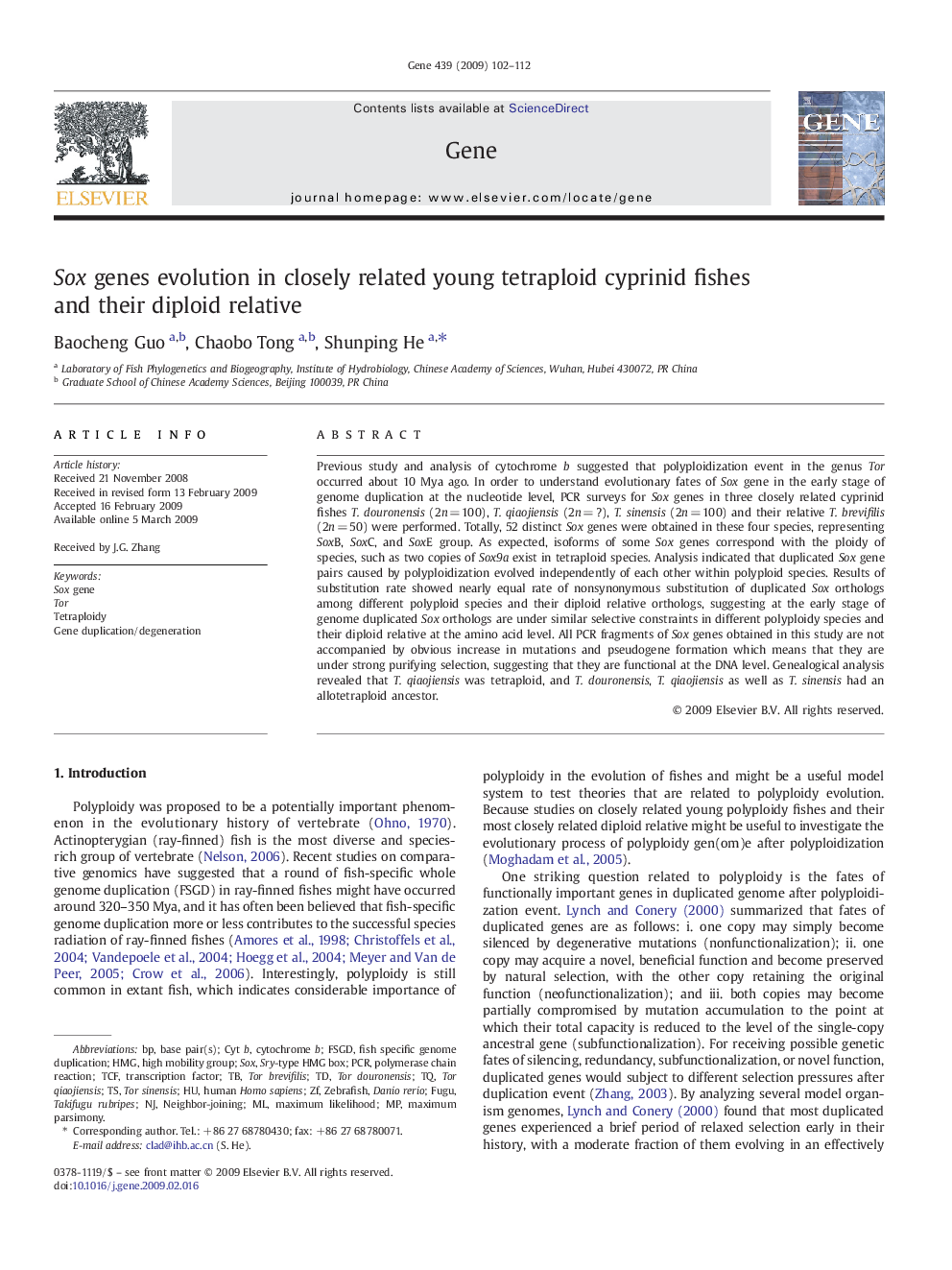| Article ID | Journal | Published Year | Pages | File Type |
|---|---|---|---|---|
| 2818894 | Gene | 2009 | 11 Pages |
Previous study and analysis of cytochrome b suggested that polyploidization event in the genus Tor occurred about 10 Mya ago. In order to understand evolutionary fates of Sox gene in the early stage of genome duplication at the nucleotide level, PCR surveys for Sox genes in three closely related cyprinid fishes T. douronensis (2n = 100), T. qiaojiensis (2n = ?), T. sinensis (2n = 100) and their relative T. brevifilis (2n = 50) were performed. Totally, 52 distinct Sox genes were obtained in these four species, representing SoxB, SoxC, and SoxE group. As expected, isoforms of some Sox genes correspond with the ploidy of species, such as two copies of Sox9a exist in tetraploid species. Analysis indicated that duplicated Sox gene pairs caused by polyploidization evolved independently of each other within polyploid species. Results of substitution rate showed nearly equal rate of nonsynonymous substitution of duplicated Sox orthologs among different polyploid species and their diploid relative orthologs, suggesting at the early stage of genome duplicated Sox orthologs are under similar selective constraints in different polyploidy species and their diploid relative at the amino acid level. All PCR fragments of Sox genes obtained in this study are not accompanied by obvious increase in mutations and pseudogene formation which means that they are under strong purifying selection, suggesting that they are functional at the DNA level. Genealogical analysis revealed that T. qiaojiensis was tetraploid, and T. douronensis, T. qiaojiensis as well as T. sinensis had an allotetraploid ancestor.
